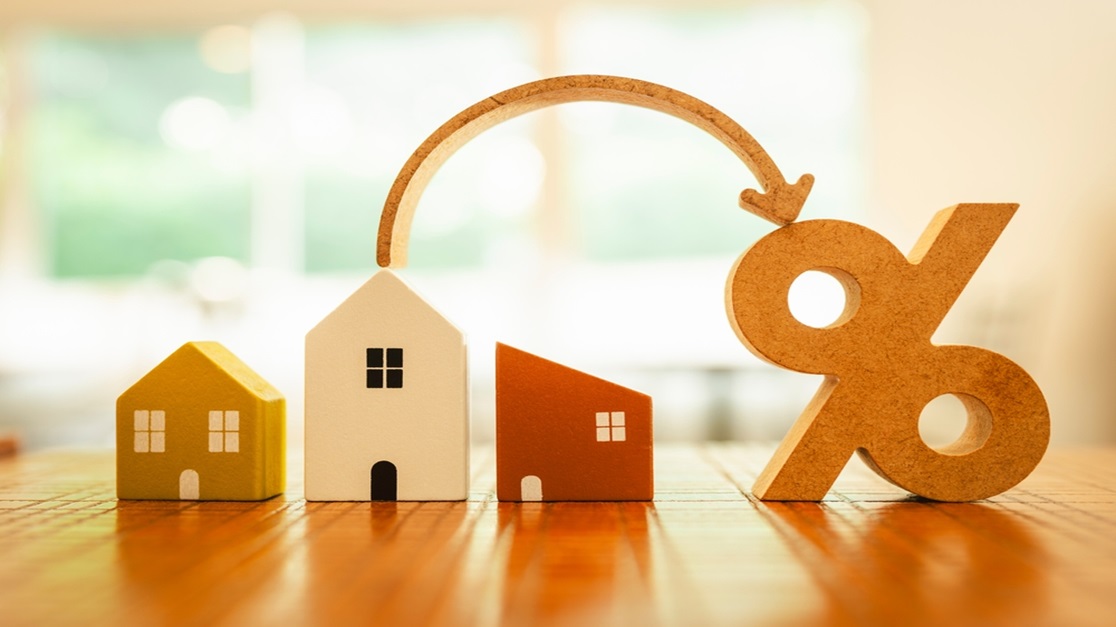Understanding Circle Rates: How They Impact Property Transactions
March 24, 2025

Buying or selling a property can be a complex process, with many factors to consider. One essential element that both buyers and sellers need to understand is the concept of circle rates. Circle rates play a significant role in determining the fair market value of a property and impact on property transactions in India.
In this blog , we will explain what circle rate of a property is, why they are important for homebuyers for property valuation, and how they can affect property transactions. By understanding circle rates, you can make informed decisions when buying or selling property.
What is Circle Rate?
Circle rates, also known as guidance value or ready reckoner rates, are the minimum price values set by state governments for land or properties in specific areas. These rates help determine stamp duty and registration fees for property transactions. Each state in India has its circle rate list, which is periodically updated based on factors such as location, market trends, and infrastructure development. Circle rates vary from one locality to another within a state.
Factors That Affect Circle Rates
Several factors influence the circle rate of a property:
- Locality of the Property: The locality of a property plays a crucial role in determining its circle rate. Properties in busy metropolitan or urban areas generally have higher circle rates than underdeveloped or suburban areas.
- Type of Property: Commercial and residential properties have different circle rates. Commercial properties often have higher potential returns, leading to higher circle rates.
- Ownership of the Property: Government-owned properties often have lower circle rates due to non-private ownership. On the other hand, properties owned by real estate developers or private individuals might have higher circle rates.
- Size of Property: The size of the property also affects its circle rate. Generally, properties with a higher area or sq. ft. larger have higher circle rates compared to smaller ones.
- Access to Amenities: Lifestyle needs like local amenities, transport access, or infrastructure development in the area can impact the value of properties and subsequently impact the circle rate.
Understanding these factors will help you assess a property's circle rate and make more informed decisions when buying or selling real estate.
Importance of Circle Rates for Homebuyers
Circle rates hold significant importance for homebuyers for several reasons:
- Determining Fair Property Value: Circle rates help homebuyers understand a property's fair market value. By comparing the circle rate with the asking price, buyers can assess whether a property is priced reasonably or overpriced.
- Avoiding Undervaluation: Checking the circle rate is crucial to avoid undervaluing a property during transactions. Buyers could face legal issues or complications related to undervaluation if the actual property value is significantly higher than the circle rate.
- Getting Realistic Loan Approvals: When applying for a home loan, banks and financial institutions consider both a property's market rate and circle rate. If there is a significant difference between the two, it may impact loan approval or result in a lower loan amount.
How Circle Rates Affect Property Transactions
The circle rate of a property plays a crucial role in different aspects of the transaction process:
- Stamp Duty and Registration Fees: Stamp duty and registration fees are calculated based on the circle rate or the agreed property value, whichever is higher. Buyers need to pay stamp duty and registration fees during property registration. The circle rate acts as a benchmark for determining these charges.
- Negotiations: Understanding the circle rate can help buyers negotiate better deals with sellers. By comparing the asking price with the circle rate, buyers can assess whether the seller is asking for a fair price or if there is room for negotiation.
- Property Valuation: Circle rates aid in property valuation by providing a reference point for determining its fair market value. Buyers and sellers can use the circle rate as a starting point when deciding on an appropriate price for a property.
- Legal Compliance: Adhering to circle rates ensures legal compliance during property transactions. It helps prevent undervaluation, tax evasion, and other illegal practices that could lead to legal complications in the future.
How the Government Calculates Stamp Duty Based on Circle Rate
Let’s say you want to buy a property in Bangalore, where the stamp duty charge is 5% for properties above ₹45 lakh. So, if the circle rate of the property costs ₹50 lakh, the stamp duty would be ₹2,50,000.
Let’s take a look at the circle rate in Bangalore.
Ready Reckoner/Circle Rates in Bangalore
The current circle rates as of October 2024 in Bangalore as decided by the Government of Karnataka is as follows:
| Locality in Bangalore | Circle Rate on area per acre basis |
| Ayurveda Hospital to RMC Hospital | ₹49,100 |
| Gokulam Third Stage | ₹28,000 |
| Janatanagar | ₹11,800 |
| Srirampura First Stage | ₹23,000 |
| Ambedkar Colony | ₹3,500 |
| Kumbara Koppal Colony | ₹6,500 |
| Gokulam Main Road | ₹38,400 |
| B.M. Srinagar Cross Road | ₹28,000 |
| Vani Vilas Market to D Banumaiah Circle | ₹32,000 |
| Banumaiah Circle to KR Circle | ₹68,200 |
| Gokulam Cross Road | ₹19,800 |
| Metagalli Main Road | ₹18,300 |
| Kumbara Koppal Inner Cross Road | ₹9,900 |
| Kamalaka Slum Development Board Houses | ₹8.600 |
| Srirampura Second Stage | ₹24,000 |
| Hale Ooru | ₹8,500 |
| BM Sri Nagar Mam Road | ₹10,100 |
| Karakushala Nagar | ₹5,400 |
| Contour Road EWS | ₹19,700 |
| Bogadi First and Second Stage | ₹28,800 |
| Kumbara Koppal Main Road | ₹1,29,000 |
What is the Difference Between Market Rate and Circle Rate?
The market rate is the actual price at which a property is bought or sold in the open market. It is determined by demand and supply dynamics, the property’s location, size, amenities, and other factors like infrastructure development and market conditions. Buyers and sellers usually negotiate the final price based on the market rate. Factors like proximity to schools, hospitals, business hubs, and future development plans affect the market rate.
The circle rate or ready reckoner rate is the minimum rate set by the government for registering property sales. It serves as a reference value for calculating stamp duty and registration charges. The government uses the circle rate to ensure that properties are not undervalued in official records to avoid stamp duty. If a transaction occurs at a lower price than the circle rate, the buyer must pay stamp duty based on the circle rate. Sometimes, the circle rate may be higher or lower than the actual market rate, creating a gap between the official rate and what buyers are willing to pay.
Final Thoughts
Understanding circle rates is crucial for homebuyers and sellers when navigating property transactions. Circle rates help determine fair property valuation, aid in negotiations, and ensure legal compliance during transactions. Buyers can make informed decisions and negotiate better deals by comparing circle rates with market rates and considering other factors, such as location, type of property, ownership, and area.
Buying a house has never been this easy! Avail Ujjivan SFB’s wide range of affordable home loan products and enjoy a hassle-free loan journey. From house purchase loan to plot loans and home improvement loans, we have it all! Alternatively, you can browse through Ujjivan SFB product suite - our wide range of financial products are designed to make your financial life better.
Disclaimer:
The contents herein are only for informational purposes and generic in nature. The content does not amount to an offer, invitation or solicitation of any kind to buy or sell, and are not intended to create any legal rights or obligations. This information is subject to updation, completion, amendment and verification without notice. The contents herein are also subject to other product-specific terms and conditions, as well as any applicable third-party terms and conditions, for which Ujjivan Small Finance Bank assumes no responsibility or liability.
Nothing contained herein is intended to constitute financial, investment, legal, tax, or any other professional advice or opinion. Please obtain professional advice before making investment or any other decisions. Any investment decisions that may be made by the you shall be at your own sole discretion, independent analysis and evaluation of the risks involved. The use of any information set out in this document is entirely at the user’s own risk. Ujjivan Small Finance Bank Limited makes no representation or warranty, express or implied, as to the accuracy and completeness for any information herein. The Bank disclaims any and all liability for any loss or damage (direct, indirect, consequential, or otherwise) incurred by you due to use of or due to investment, product application decisions made by you on the basis of the contents herein. While the information is prepared in good faith from sources deemed reliable (including public sources), the Bank disclaims any liability with respect to accuracy of information or any error or omission or any loss or damage incurred by anyone in reliance on the contents herein, in any manner whatsoever.
To know more about Ujjivan Small Finance Bank Products Visit:"https://www.ujjivansfb.in"
All intellectual property rights, including copyrights, trademarks, and other proprietary rights, pertaining to the content and materials displayed herein, belong
to Ujjivan Small Finance Bank Limited or its licensors. Unauthorised use or misuse of any intellectual property, or other content displayed herein is strictly prohibited and the same is not intended for distribution to, or use by, any person in any jurisdiction where such distribution or use would (by reason of that person’s nationality, residence or otherwise) be contrary to law or registration or would subject Ujjivan Small Finance Bank Limited or its affiliates to any licensing or registration requirements.
FAQs
1. How do I find the circle rate for a specific locality?
You can find the circle rate for a specific locality by visiting the local sub-registrar's office or checking the state government's official website.
2. Are circle rates the same across all states in India?
No, circle rates vary from state to state and even within different localities within a state.
3. How often are circle rates updated?
Circle rates are periodically updated by state governments based on various factors such as market trends, infrastructure development, and demand.
4. Do banks consider circle rates when approving home loans?
Yes, banks consider both the market rate and the circle rate of a property when evaluating loan applications.
5. Can I challenge the government's circle rate?
Challenging the circle rate the government sets can be a complex process. It is advisable to consult legal professionals if you believe there are discrepancies in the circle rate.
6. Can I sell my property above the circle rate?
Yes, you can sell your property above the circle rate. However, it's important to note that stamp duty and registration fees will be calculated based on either the agreed property value or the circle rate, whichever is higher.
Latest Blogs

Dussehra 2025: How to Win Your Financial Battles with Smart Saving
Dussehra 2025 (also known as Vijayadashami) falls on Thursday, October 2, 2025.

eSIM Scam in India: I4C Warns Mobile Users About Rising Fraud – How to Stay Safe
The Indian Cybercrime Coordination Centre (I4C), a wing of the Ministry of Home Affairs, issued a strong warning to mobile users about the rapid increase in eSIM fraud in India.

How to Link PAN with Aadhaar: Step-by-Step Guide & Consequences of Not Linking
Linking your Permanent Account Number (PAN) with your Aadhaar is no longer just a best practice.

Annual Information Statement (AIS): A Complete Guide for Stress-Free ITR Filing
India’s tax season is in its final stretch.

ITR-1 (Sahaj) Restrictions: Income Sources Not Allowed & Filing Rules
With just a few days left before the 15 September 2025 deadline for filing Income Tax Returns (ITRs) for Assessment Year (AY) 2025-26, many taxpayers are rushing to submit their forms online.





